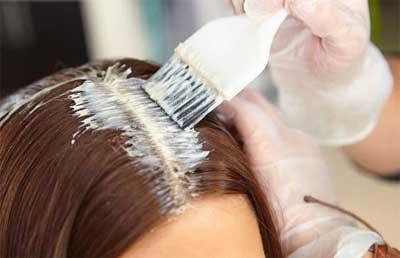- Home
- Editorial
- News
- Practice Guidelines
- Anesthesiology Guidelines
- Cancer Guidelines
- Cardiac Sciences Guidelines
- Critical Care Guidelines
- Dentistry Guidelines
- Dermatology Guidelines
- Diabetes and Endo Guidelines
- Diagnostics Guidelines
- ENT Guidelines
- Featured Practice Guidelines
- Gastroenterology Guidelines
- Geriatrics Guidelines
- Medicine Guidelines
- Nephrology Guidelines
- Neurosciences Guidelines
- Obs and Gynae Guidelines
- Ophthalmology Guidelines
- Orthopaedics Guidelines
- Paediatrics Guidelines
- Psychiatry Guidelines
- Pulmonology Guidelines
- Radiology Guidelines
- Surgery Guidelines
- Urology Guidelines
Hormonal contraceptives, hair dyes linked to increased breast cancer risk

London : Women who dye their hair or use hormonal contraceptives may be at an increased risk of breast cancer, a new study has warned.
Researcher Sanna Heikkinen from the University of Helsinki and Finnish Cancer Registry evaluated the contribution of the use of hormonal contraceptives and hair dyes to the spectrum of breast cancer risk factors.
The analysis included self-reported survey data from 8,000 breast cancer patients and 20,000 controls from Finland.
According to the results, use of hormonal intrauterine device was associated with 52 per cent increased risk of breast cancer in post-menopausal women, when compared to women who had used copper intrauterine device.
The use of other hormonal contraceptives was, by contrast, associated with 32 per cent higher breast cancer risk among younger women under 50 when compared to women who did not use hormonal contraceptives.
There was also a 23 per cent observed increase in the risk of breast cancer among women who dyed their hair compared to those who did not, researchers said.
"The biggest risk factor in breast cancer is high age, and known lifestyle-related risk factors include late age at first birth, small number of children, high alcohol consumption, and sedentary lifestyle," Heikkinen said.
Many of these factors have become significantly more common in Western countries during the last decades, researchers said.
Further study on the effects of hormonal contraceptives, most specifically hormonal intrauterine device, and hair dyes is needed with other populations and a prospective study design, researchers said.
In her research, Heikkinen also investigated the amount of opportunistic mammography, which was found to be very common. More than 60 per cent of responders reported having had a mammography before the screening age of 50.
"Women should be more extensively informed of the harms of opportunistic mammography, such as accumulating radiation burden and the potential consequences of false positive or negative findings," Heikkinen said.

Disclaimer: This site is primarily intended for healthcare professionals. Any content/information on this website does not replace the advice of medical and/or health professionals and should not be construed as medical/diagnostic advice/endorsement or prescription. Use of this site is subject to our terms of use, privacy policy, advertisement policy. © 2020 Minerva Medical Treatment Pvt Ltd